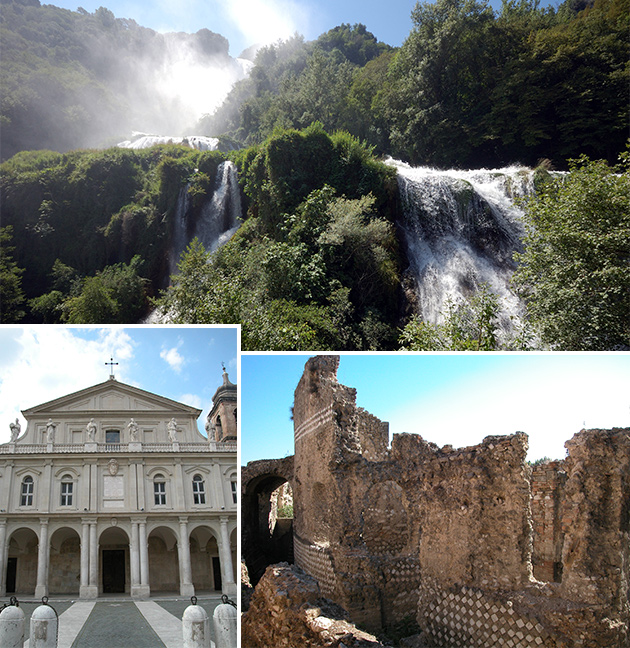
When you need a break from Rome‘s artistic excitement and big-city atmosphere, head to its main train station, Termini, and jump on the first train headed to the fascinating medieval town of Terni, a quieter spot. Even though the city does boast its fair share of art, sanctuaries and delicious cuisine, it’s nearby Cascata delle Marmore (Marmore Falls) that makes it popular and attracts the majority of its tourists.
Terni is just an hour train ride from Rome, but it will be enough to appreciate the gradual transformation from a busy central station to a sleepy hamlet that enshrines natural beauty and a mystic atmosphere. Sit back and welcome the striking contrast between tall buildings and picturesque countryside houses, between Rome’s bustling environment and the middle-of-nowhere, slow-paced lifestyle. Before you even realize it, the recorded voice will announce your arrival in Terni, the closest stop to the most scenic spot in central Italy.
Located in the Umbria region, the country’s green heart, Cascata delle Marmore is reachable via a short bus ride directly from the Terni train station. While it’s a stunning landscape, these waterfalls are not a gift from Mother Nature but a superb result of human creativity, and this adds to their charm. In fact, you’ll hardly question Roman hydraulic expertise — especially if you’ve already visited Rome’s magnificent Baths of Caracalla near the Colosseum — but you’ll find that this spot falls into an altogether different category of engineering, with no mosaics involved, but certainly no less spectacular.
Cascata delle Marmore were designed in 271 B.C. by Roman consul Curio Dentato who, by making the waters of Velino River flow into those of Nera River through the Cavo Curiano canal, sought to reclaim the plane above from the swamp that made it noxious and potentially virulent. Beginning in the 15th century, over the span of 300 years, many architects worked on new canals to improve the flow, and each of those played a role in giving the falls the look they have today. Since late 19th century, the waters have been used for the production of hydroelectric energy, and this is why the flow is open (and the falls visible) at specific hours.
There are five trails you can follow to better appreciate the view, each enhancing a different aspect of the falls — be it learning their history, reaching the most spectacular spot or highest point, or getting a glimpse of the Nera River and the old hydraulic power station. If you’re in a romantic mood, plunge into an otherworldly dimension by taking the first trail, at the end of which you will find a tunnel leading to one of the most breathtaking viewpoints, the Lovers’ Balcony. Apart from enjoying an unprecedented panorama, you will have the ultimate experience of the falls by getting soaking wet. Each trail has a different level of difficulty, but none takes too long, meaning that in a day you can tackle more than one or, if you are a good hiker, even all of them.
Whichever route you choose — before making your way through the narrow, shaky wooden bridges, rickety staircases, slippery-wet rocks and the small caves that will turn your day into an intriguing adventure — take a moment to enjoy the façade of the falls, a loud, tumbling cascade that, together with the sheer beauty of the surrounding vegetation, has dazzled and inspired poets, writers and painters for centuries, from Virgil to Lord Byron to Corot.
Whether you prefer to have your full immersion in nature in the morning or afternoon, after your hike, treat yourself to some delicacies from the local culinary tradition, in which ancient flavors and modern style blend exquisitely. Grab a table con vista at one of the restaurants located within walking distance of the falls and order any of the specialties, from truffle-based dishes at Trattoria Trappacchiella to housemade pasta at Il Pavone d’Oro.
On your way back to Rome, you’ll feel as if you’ve spent a whole day at a yoga retreat, relaxed, at peace and ready to keep exploring the artistic wonders of the Eternal City.
